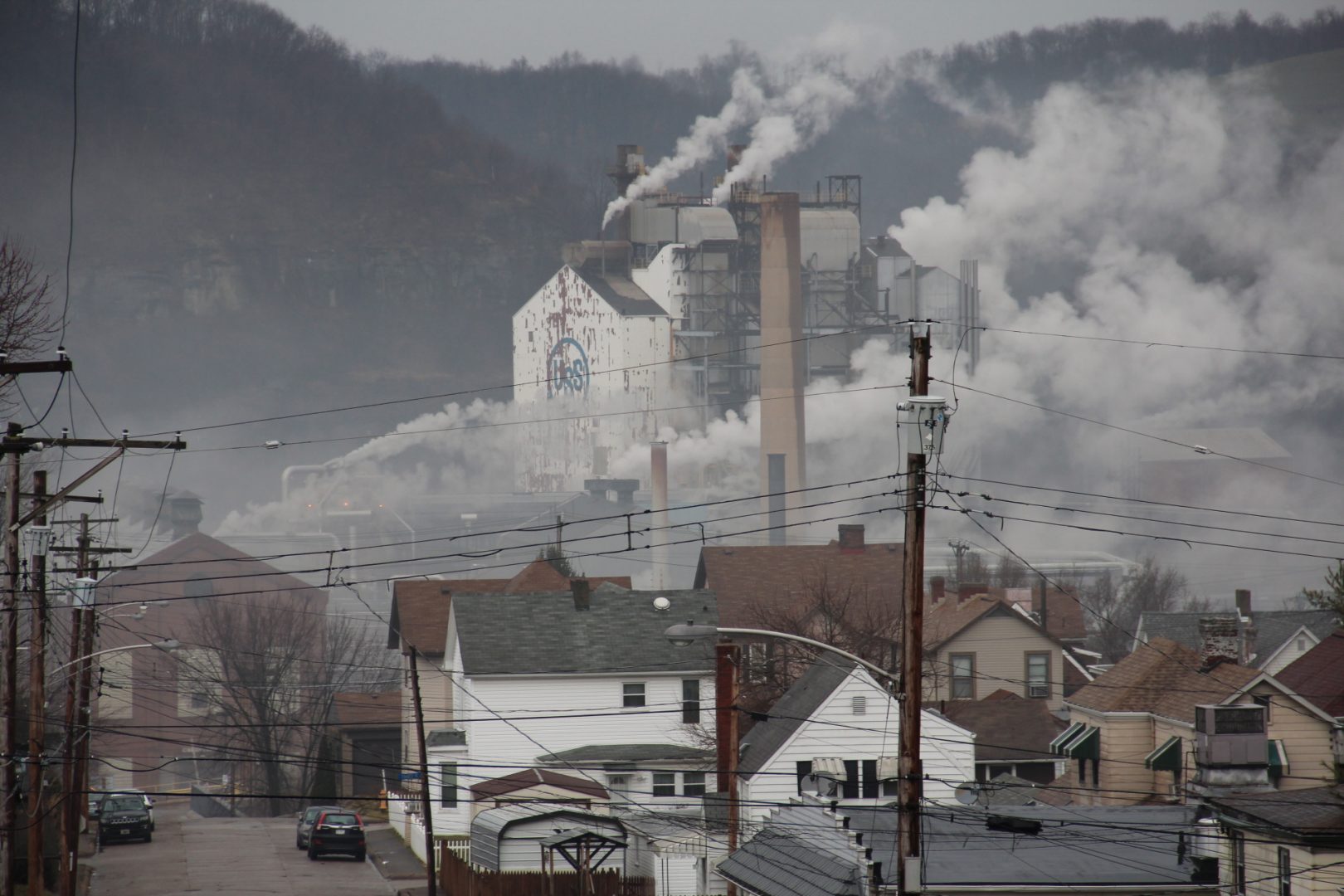
U.S. Steel's Clairton Plant, the largest coke works in North America, in Clairton, Pa.
Reid R. Frazier / StateImpact Pennsylvania


U.S. Steel's Clairton Plant, the largest coke works in North America, in Clairton, Pa.
Reid R. Frazier / StateImpact Pennsylvania

Reid R. Frazier / StateImpact Pennsylvania
U.S. Steel's Clairton Plant, the largest coke works in North America, in Clairton, Pa.
The Allegheny County health department levied a $1.8 million fine against US Steel for gas leaks at the company’s Clairton coke works that resulted in high levels of hydrogen sulfide, a gas that smells like rotten eggs, in nearby communities.
The county said its air quality monitor in Liberty Borough, just north of the Clairton plant, has exceeded state standards 153 times from Jan. 1, 2020 to March 1, 2022.
The agency released a study last week in which it concluded that the exceedances were “entirely” caused by the Clairton plant, North America’s largest coke plant, and an integral part of the company’s Pittsburgh area steel works.
The study examined other potential sources of hydrogen sulfide, or H2S, like the Clairton Wastewater Treatment Plant, abandoned coal mines, and landfills. It found that none could have contributed to the elevated levels of H2S at the air monitor in Liberty.
Under county air rules, companies are not allowed to “cause an exceedance” of ambient air quality standards. Proving whether a certain facility “caused” the exceedance can be tricky. But the county says the study proves that Clairton, and only Clairton, is the cause of the rotten egg smells that have plagued the area around the plant.
“Other potential sources of H2S were evaluated and eliminated as contributors to measured H2S concentrations at the Liberty Monitor,” said Shannon Sandberg, the health department’s chief enforcement officer for air quality. “The data show that they are the cause of the exceedances.”
Hydrogen sulfide is a colorless gas that can cause eye irritation, headaches, and fatigue.
Amanda Malkowski, a spokeswoman for US Steel, said the company is reviewing the fine.
“We dispute (the health department’s) assertions that there are no other sources contributing to the H2S exceedances,” Malkowski said, in an emailed statement. “We also dispute ACHD’s assertions that there is no evidence that other sources affect the Liberty monitor H2S concentrations and that the H2S exceedances are attributed entirely to emissions from our Clairton plant.”
State-reported data show the Clairton plant is by far the largest single source of hydrogen sulfide emissions in the state, and responsible for over 90 percent of these emissions in Allegheny County.
US Steel recently appealed nearly $900,000 in fines for visible emissions at Clairton. The plant has received $4.3 million in fines since 2017, according to EPA data. Buoyed by high steel prices, the company reported a $4 billion profit in 2021.
Patrick Campbell, executive director for the Group Against Smog and Pollution, said in an emailed statement the county’s enforcement action “confirms what so many of us long suspected: That U.S. Steel’s Clairton Coke Works is solely to blame for the ongoing exceedances” of hydrogen sulfide in the area. “Hopefully, this is the first of many steps the health department will take to rectify this issue once and for all because Mon Valley communities have endured poor air quality for far too long.”
StateImpact Pennsylvania is a collaboration among WITF, WHYY, and the Allegheny Front. Reporters Reid Frazier, Rachel McDevitt and Susan Phillips cover the commonwealth’s energy economy. Read their reports on this site, and hear them on public radio stations across Pennsylvania.
(listed by story count)
StateImpact Pennsylvania is a collaboration among WITF, WHYY, and the Allegheny Front. Reporters Reid Frazier, Rachel McDevitt and Susan Phillips cover the commonwealth’s energy economy. Read their reports on this site, and hear them on public radio stations across Pennsylvania.
Climate Solutions, a collaboration of news organizations, educational institutions and a theater company, uses engagement, education and storytelling to help central Pennsylvanians toward climate change literacy, resilience and adaptation. Our work will amplify how people are finding solutions to the challenges presented by a warming world.